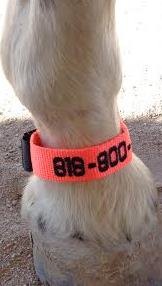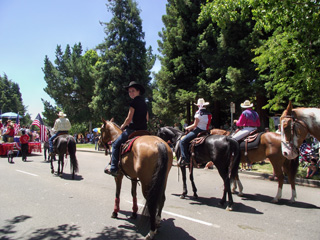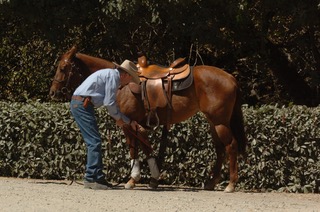
Several years ago at a horse expo when another presenter cancelled at the last minute, I was asked to fill in and discuss disaster preparedness for hurricanes, tornados, fires, etc. With nothing prepared, I decided to talk in terms of common sense. The question centered on whether it is better to leave horses in the barn/stall when there is a hurricane or tornado watch or, is it wiser to turn them out into a pasture or simply open the gates? For me, freedom is the best option.
Just recently I talked to someone on a social media who lost her horse during a hurricane. She explained to me that the hurricane came through the property where she kept her horse and they lost a couple of horses because the barn roof collapsed. This type of situation is also common during a tornado. A few years ago in Texas several barns were destroyed and numerous horses were killed because of barn roof collapses. Many barns are old and in need of retro fit or replacement. To me it makes sense to get your horse out of the stall with the freedom to get away. If you turn your horse loose during a disaster, there may be a better chance of survival.
The last two years the folks in Northern California have had little or no warning when major fires have broken out and burned thousands of acres. Now they know that when there is a high wind warning, fire is almost inevitable. Thousands of homes and barns burned. Being free to run away saved many horses. Many were burned and just as people from other areas of the state donated supplies and money, veterinarians donated time and supplies to care for these animals. Many people with trucks and trailers drove north to take animals to where they could be stabled or housed. Reuniting these horses as well as goats, cows and a multitude of small animals was an enormous task and took weeks.
About 30 years ago my horses got out and off our property. We lived on a mountain and the horses went down the mountainside. We called everyone including the Sheriff’s Department, ASPCA, and Fire Department etc. Finally, the sheriff located them and I was able to go and get them. Another time my son left the gate open and it happened again. That time they were missing for several days. Just think if I’d had my telephone number on my horses, I could have been contacted immediately regarding their whereabouts. For me it’s all about responsibility as a horse owner. That reminds me of times when I have found dogs running loose, fortunately with ID tags on their collars. I was able to call the owners directly and reunite them. We need to be able to do the same for our horses.
I also remember times when we did a lot of traveling with our horses to events and expositions. Once, unfortunately we had to park on the side of the road for a time. I worried that I might have to unload the horses and risk their escape. Like many of you, I never thought about having identification on my horses in case they spooked and ran away, got out of an overnight stall, electric fence enclosure or broke away from the trailer. Thinking back now it would have been smart to have our telephone number on our horses “just in case” a situation arose where we became separated from the horses.
Fast forward several years, I have met a lady who has developed a horse identification collar. Her product is nice because it goes around the horses’ neck with a hook and loop, a safe breakaway closure much like any fly mask. You can write your name/horses name and your telephone number on it. Even better, she also has a product that can go around the horses’ pastern with your telephone number embroidered on it. These products are inexpensive and can save you from a world of worry. Most of us buy at least one or two fly masks a year, so why not invest in the ability of identify your horse for about the same cost?
If my horse gets away from me for any reason, anyone who finds my horse can contact me immediately. Just recently where I board my horses in South Carolina, while trail riding a lady fell off her horse when it spooked. The horse ran off, but luckily we found him munching on green grass just a few hundred yards down the path. Here in South Carolina, there is a lot of green grass and the horse stopped. If the horse had run farther, she would have had a long walk and worse yet, if that horse had continued to run down the road and ended up on someone’s farm, how would that person know where or to whom that horse belonged? Most of us have had this experience at one time or another.
Many of my clients travel to horse shows and events, so the ID collar is a neat idea. Better yet, an ID band on your horse when traveling, even while at a show in case your horse gets out of its stall or loose from your trailer. My horses currently wear the leg band 24/7. I switch them from leg to leg and haven’t had any rubbing or concerns with sores. I know that if they get out my telephone number is right there for anyone to contact me immediately. If you are interested in learning more about the products I have discussed, you can obtain a free 26-page booklet entitled “Emergency/Evacuation Report” by going to www.EquestriSafe.com.
There are other ways of identifying our horses, including the use of a microchip. I read an article a couple of months ago that disclosed a problem of some concern. Not everyone has a correct reader or any reader at all even though readers are getting cheaper. This article also said that after a major hurricane, some dogs were not returned to their owners for almost a year because there was no way to contact the owners. If purchased on line a microchip may not be registered correctly. The original owner of the animal may not have changed the registration or provided information that the animal was microchipped. Finally, people cannot tell visually that an animal is microchipped. It is so much easier when a dog has a collar and tag and a horse has an ID collar or leg band with contact information.
Some horses are branded but there is no national government database for all brands registered in the United States and not all brands stay in the state registry. Next time I’ll discuss the steps you can take to prepare for emergencies ahead of time.




